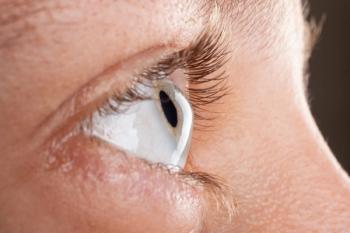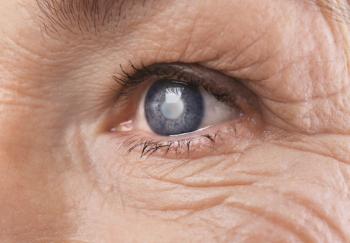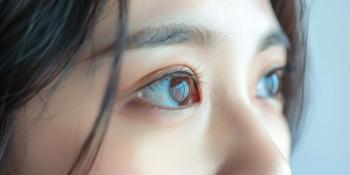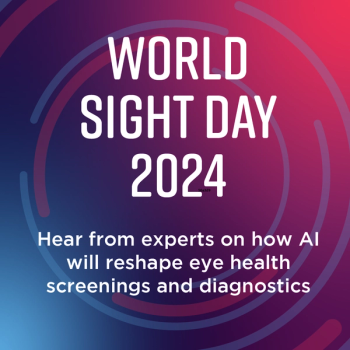
How cell phone use can affect student retention and attention in the classroom.

A home self-imaging device can provide ophthalmologists with actionable insight between office visits for AMD

This initiative is supported by a $5 million grant from the Knights Templar Eye Foundation.

Thomas Aaberg Jr, MD sat down to discuss previous presentations by Neurotech at EURETINA and Retina Society as well as upcoming presentations on NT-501 at this year's American Academy of Ophthalmology meeting held in Chicago, Illinois.

Non-invasive, painless laser can reduce risk of vision loss

A large study performed in Canada analyzed data and found that patients are at higher risk of multiple possible complications after cataract surgery.

Steven Yeh, MD sat down to discuss his presentation on infectious causes of posterior panuveitis at this year's American Academy of Ophthalmology meeting held in Chicago, Illinois.

According to the company, there are no FDA-approved pharmacological therapies for age-related cataracts. Its C-KAD eye drop, improves vision in patients with early-to-moderate cataracts, by penetrating the eye to reduce lens clouding, the main cause for cataracts.

According to data presented this week at the 128th annual meeting of the American Academy of Ophthalmology, being held in Chicago, about three-quarters of medication volume remains in multiuse eye drop bottles tossed in the garbage well before FDA-regulated expiration dates.

The subretinal drusenoid deposits may serve as a biomarker of serious heart disease.

The authors assessed whether a new diagnosis of dry eye increases the risk of developing depression, anxiety, fibromyalgia, and chronic fatigue compared to those without dry eye.

While anxiety and depression may cause vision loss, physicians can offer hope

According to the company, in a confirmatory trial, Epioxa met pre-specified primary efficacy endpoint and exhibited positive tolerability and safety profiles through 12 months, supporting an anticipated NDA submission by the end of 2024.

The Center, which was launched in 2023, will now be named The Barry Family Center for Ophthalmic Artificial Intelligence and Human Health.

A Norwegian study demonstrates that transplant rates continue to drop over time

The DOG recognised Heidelberg Engineering founder Christoph Schoess, Prof Herbert Kaufmann, and Prof Ioannis G. Pallikaris

Centricity Vision announced new ZEPTOLink enhancements, reducing treatment time by up to 60%. These updates, aimed at improving cataract surgery efficiency and control, will be showcased at the 2024 American Academy of Ophthalmology Annual Meeting in Chicago.

David Eichenbaum, MD and Riad Sherif, MD, CEO of Oculis will present the updates with additional info on topline results from the ACUITY Phase 2 trial of OCS-05 for the treatment of acute optic neuritis (AON).

The event will focus on UNITY’s ongoing Phase 2b ASPIRE study, which is evaluating foselutoclax (UBX1325) head-to-head against aflibercept in DME.

Researchers find a strong link between Alzheimer's disease and retinal thinning

The FDA granted approval to the enVista Envy full range of vision IOLs following Canadian approval in May 2024.

According to the company, enVista Envy IOLs will be commercially available in the U.S. on a limited basis in the coming weeks and more broadly in 2025. Bausch + Lomb is also in the process of seeking regulatory approvals for the lens in additional markets.


Tinlarebant is an oral therapy designed to reduce the accumulation of vitamin A based toxins that cause retinal disease.

A recent paper reveals increasing rates of diabetic retinopathy in young patients with diabetes, sparking concerns over inadequate screening and management, especially among Black and Hispanic youths.

This Week in Ophthalmology is a video series highlighting some of the top articles featured on the Ophthalmology Times website.

MELT-300, a non-IV, non-opioid tablet for procedural sedation during cataract surgery.

The American Academy of Ophthalmology 2024 annual meeting features key lectures and award sessions, highlighting advancements in ophthalmology from leading experts across the field.

On World Sight Day, leading experts in ophthalmology look at artificial intelligence and how it could impact diagnosing and finding diseases in the future.

According to the company, MCO-010 is an ambient-light activatable Multi-Characteristic Opsin (MCO) optogenetic therapy for vision restoration in advanced retinitis pigmentosa (RP), irrespective of gene mutation.